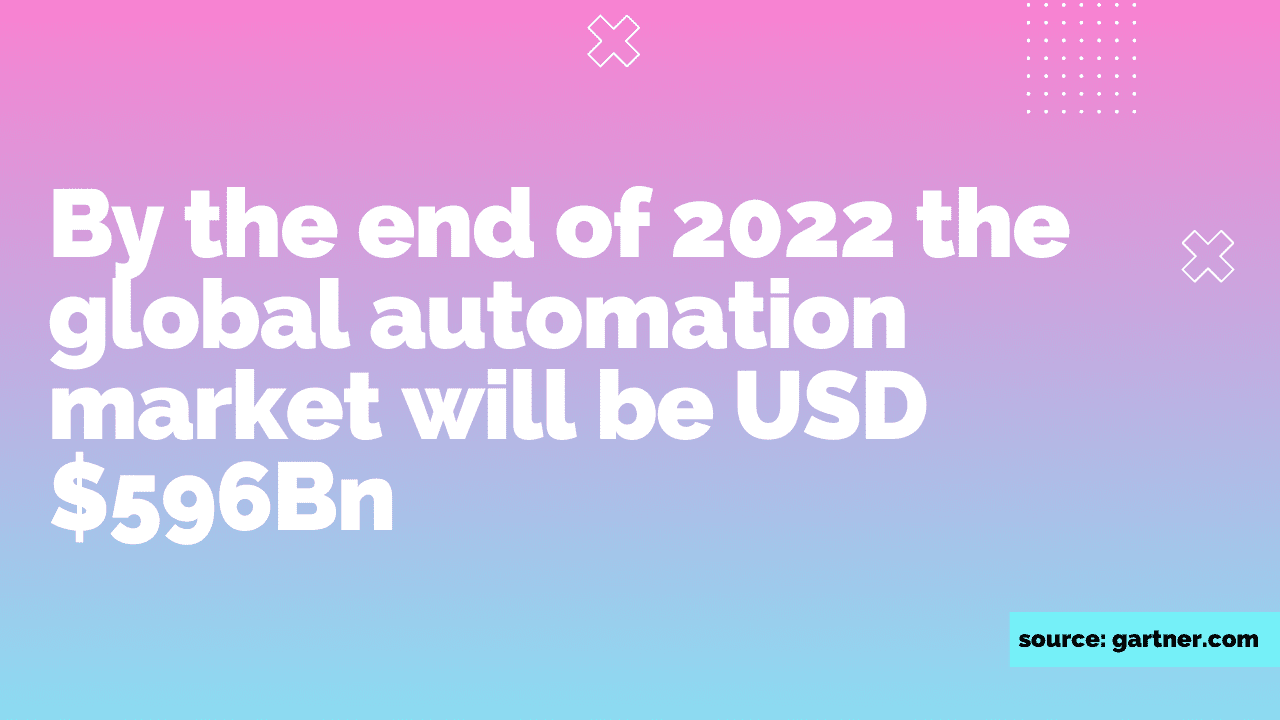100 business automation statistics you need to know (2022)
The world of business automation has grown by leaps and bounds over the last decade, thanks to technological advancements. In recent years, we've seen a significant increase in business automation for sales, marketing, and customer service processes. Many companies are now using predictive dialers to interact with customers on the phone or online; others are using speech recognition software to help them manage call centers. One of the biggest trends is using automation tools like Zapier for workflow automation or IFTTT, a service that allows users to program automated responses to events.
According to a report from Businesswire, the total market for Global Marketing Automation is expected to grow from 5.2B in 2022 to USD 9.5B by 2027, growing at a CAGR of 12.8% during the forecast period.
Here is a look at more trends and statistics surrounding business automation in 2022:
Manual Tasks
Most technological automation is developed to relieve the stress that comes with manual tasks. Most businesses opt for automation to make work easier and to reduce costs. This aspect eventually affects the labor market.
Let's look at some statistics on the effects of automation on manual tasks.
- 43% of businesses plan to scale down on their workforce due to automated processes—however, 34% plan to increase their workforce due to technological integrations.
- 31% of companies are concerned about job loss from artificial intelligence (AI).
- A global survey done by McKinsey and Co. found that 66% of organizations have introduced automation in their business processes.
- 48% of organizations are in the process of automating manual tasks.
Automation tools
Automation tools help both businesses and customers by doing repetitive tasks automatically. Workers can focus on other tasks to improve customer satisfaction.
Here are some statistics on automation tools from a survey done by Zapier data

- According to the Zapier survey, 40% of workers say that automation software helps them stay organized at work
- 36% of workers also mention that automation software helps them focus on important tasks
- According to 31% of workers, their employers have begun using automation software
- 29% of respondents believe automation software will help them advance their careers or businesses
- 64% of knowledge workers use automation software currently at work, and nearly 18% plan to use it in the future
- 47% of global organizations don't use automation tools due to a lack of knowledge.
Customer Service
The level of support service a business has in every industry can affect its growth rate. Today, automation is the key to achieving excellent customer service.
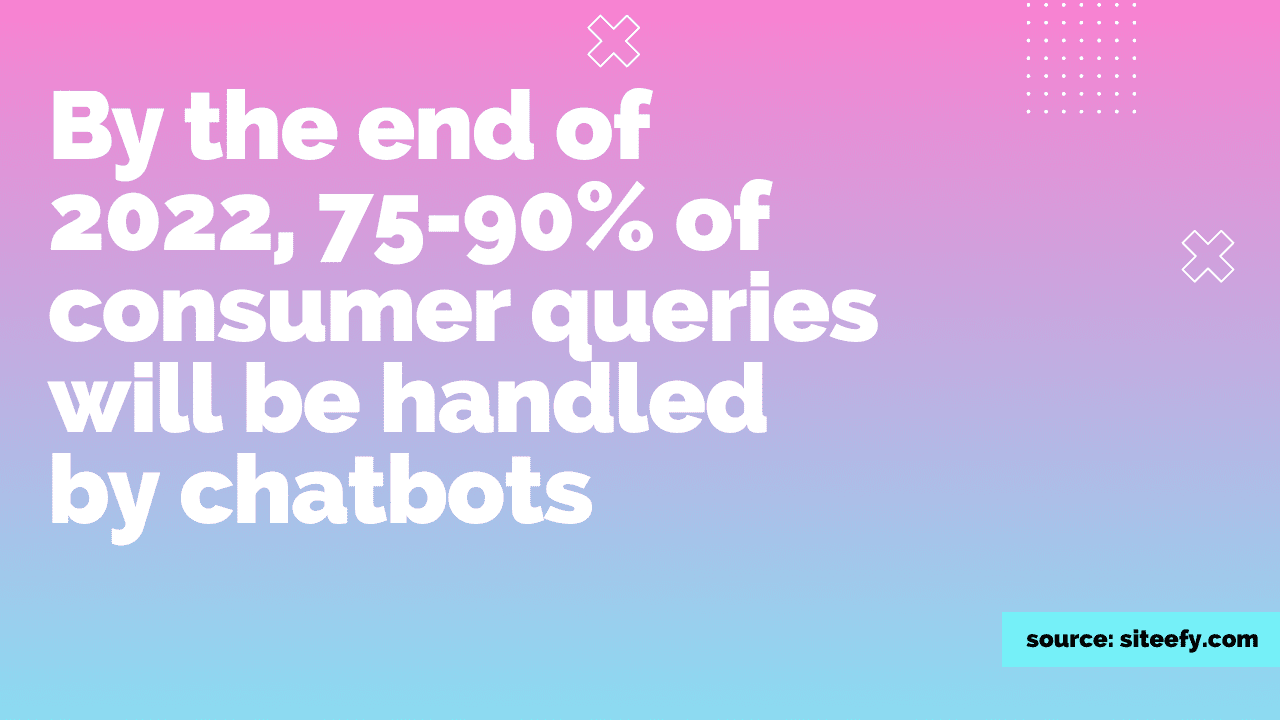
Here are some statistics from Siteefy on how automation impacts customer service.
- In the US, 40% of clients use chatbots to interact with retailers, and 74% of consumers expect the availability of a chatbot on a website.
- By the end of 2022, 75-90% of consumer queries will be handled by chatbots.
- 65% of customer feedback is collected automatically by customer service teams.
- 17% of customers who have interacted with an AI chatbot rated the experience 5 out of 5 stars.
- 88% of small businesses claim that automation has made it possible to compete with larger enterprises by offering better customer service.
- Organizations can save 30% of customer support costs using chatbots.
Marketing automation users
Marketing professionals must keep up with new technological trends to stay ahead of competitors. This incentive drives marketers to utilize marketing automation. Let's look at some of the facts.
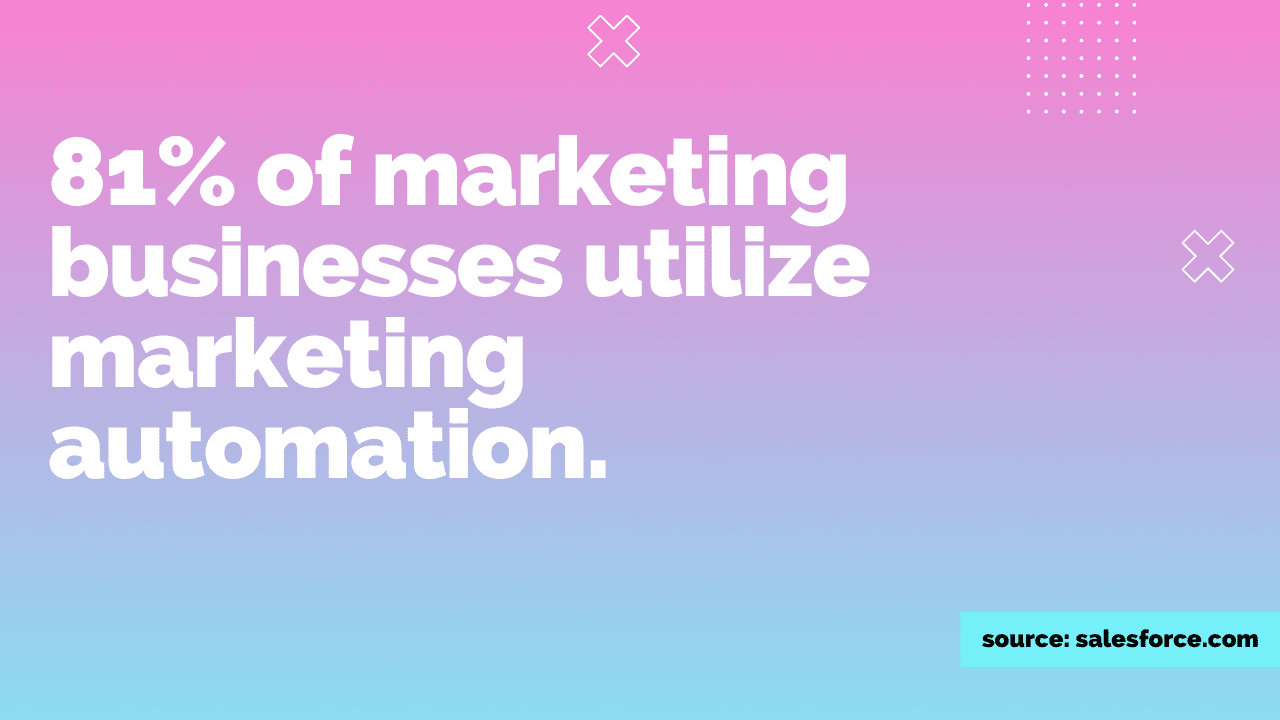
- 81% of marketing businesses utilize marketing automation.
- 31% of marketers plan to purchase marketing automation software in 2023.
- According to 58% of marketing professionals, price is the main factor when comparing marketing automation solutions. Furthermore, 54% claim that ease of use is the second most important factor to consider when choosing an automated marketing solution.
- 77% of marketing professionals use AI technologies to automate repetitive tasks.
- The global marketing automation software market is projected to increase from USD 3.60 billion in 2020 to $11.46 billion by 2027.
- From a recent survey, 65% of marketers selected email marketing as the most automated channel in 2021.
- Less than 1% of marketing professionals say that their marketing automation strategy is not effective
- 50% of organizations began using marketing automation software within the last four years
Social Media
Automating social media publication management and engagement helps to reduce hours spent on growing and maintaining brand accounts. Subsequently, the allocation of time and resources could be directed towards meeting other strategic goals.
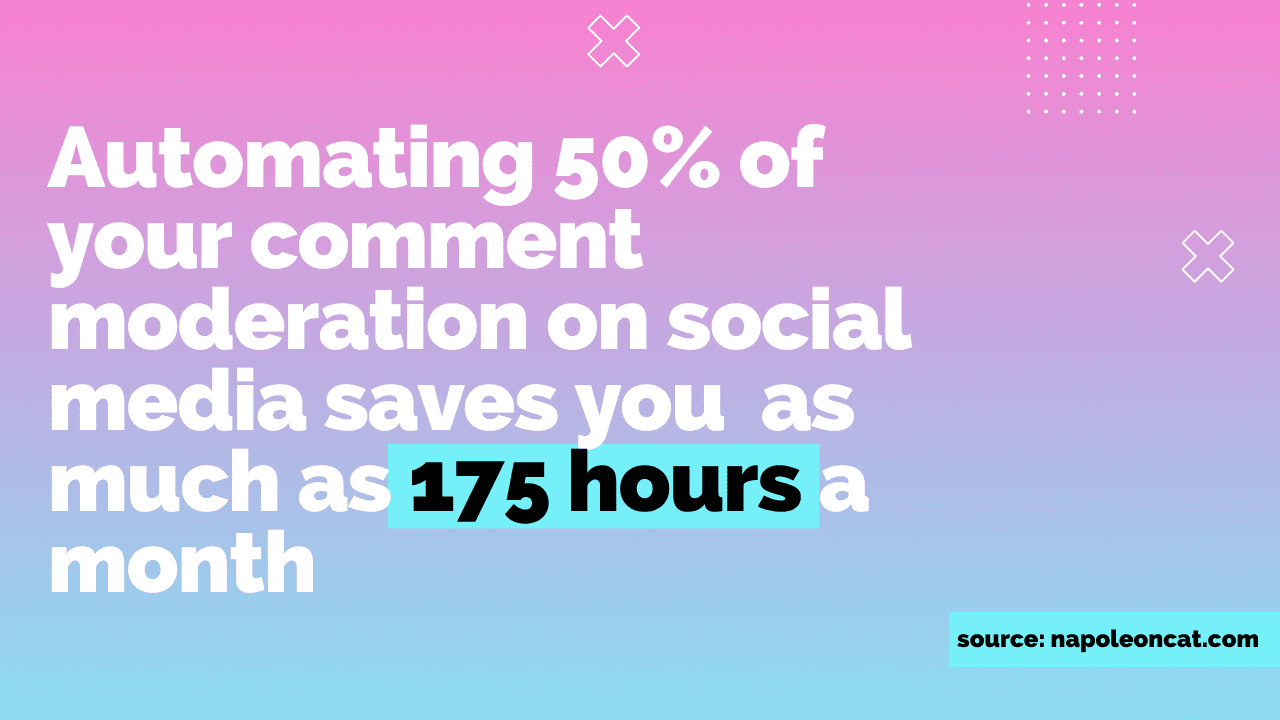
Here are some facts on social media automation in business.
- A 10% or more significant increase in revenue has been demonstrated when lead nurturing is automated with well-timed emails and offers.
- Automating 50% of your comment moderation on social media could save you as much as 175 hours a month.
- More than 80% of marketers agree that social media advertising and social media scheduling tools make the most sense for automation.
- It is estimated that 70% of marketers are interested in learning more about messenger bots, including those used on social media.
- According to 64% of marketers, social media automation is invaluable for those who are tasked with managing a company's social media in addition to their other duties.
- The statistic that is most frequently cited by marketing departments is that 83% of them automate social media posting. This is followed by 75% automation of email marketing and 58% automation of social media advertising and engagement.
- 83% of marketers say that automation in scheduling social media posts is the most helpful digital marketing tool to use.
Artificial Intelligence (AI)
AI is already disrupting nearly every business process in every industry. It is imperative for companies to maintain a competitive edge by adopting AI technologies, which are proliferating at an exponential rate.
Let's look at some statistics on AI automation in business:
- According to 48% of marketing leaders, AI has significantly changed how they interact with their customers.
- 60% of people expect artificial intelligence to make their lives easier in the next few years, with 60% expecting AI to change their daily lives profoundly.
- Within two years, 33% of technology providers intend to invest at least USD 1 million in artificial intelligence.
- AI is used by 51% of e-commerce companies to ensure a seamless shopping experience for their customers.
- By 2030, it is estimated that the contribution of artificial intelligence to the global economy is going to reach USD 15.7 trillion.
Robotic process automation (RPA)
RPA is one of the most popular trends in business automation. RPA involves software that is configured to perform tasks automatically without human intervention. Here are some facts:
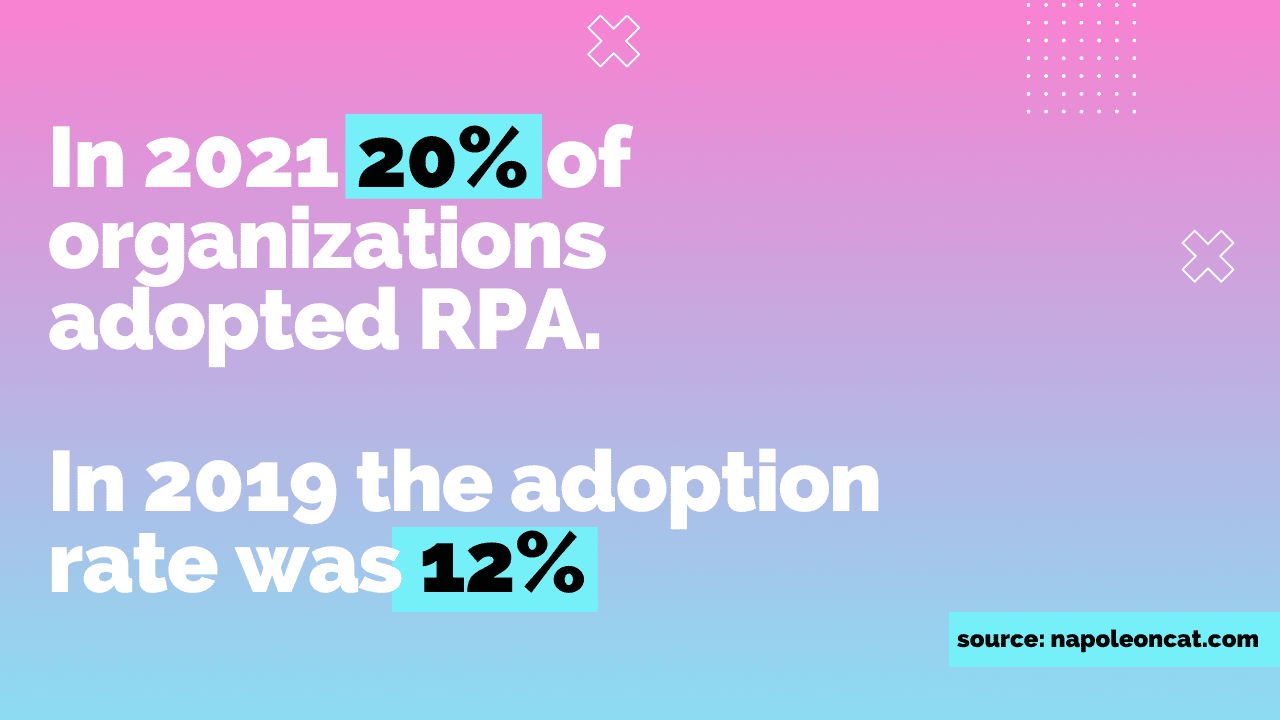
- Grand View Research predicts that the Robotic process automation market will grow to USD 3.11 billion in 2025.
- In 2021, 20% of organizations adopted RPA. That's up from the 13% adoption rate in 2020. In 2019, the adoption rate was 12%.
- 90% of enterprises worldwide have implemented RPA in some manner.
- Interestingly, employee resistance is low in organizations with robotic automation. Only 17% of organizations report employee resistance.
- 78% of robotic process animation users intend to invest more over the next three years
Big Data
Businesses need a way to process large and complex data sets to determine future operations. Automating the process of converting large volumes of data into meaningful information provides businesses with more informed decisions.
Let's look at current facts of automated Big Data on businesses.
- The percentage of companies with data-driven organizations is 38%. In contrast, the rate of companies with "data cultures" within their enterprises is 27%.
- In a recent survey, 30% of organizations invest in big data to help modernize their IT systems, 23% seek to save on costs, and 20% want to accelerate business growth.
- The two main factors that challenge Big Data within organizations are inexperienced resources and limited understanding. Source Whishworks
- Additionally, the survey found that using data analytics in retail companies can boost profits by 60%.
- According to Forbes, the combination of big data and AI automates 80% of physical work and 64% of tasks in data collection.
Machine learning
Machine learning is an algorithmic framework that learns from experience. In the business world, customer behavior analysis can be done with machine learning to help the development of new products.
- 73% of executives admit to having a form of intelligent automation initiative in their companies.
- It is estimated that 85 million jobs will be lost due to the division of work from machine learning, while 97 million jobs are predicted to stem from automation.
- Companies using AI technology have reported a 66% increase in their revenue.
- 38% of companies use machine learning to keep costs down, and 34% utilize it to enhance customer experience.
- 61% of worldwide workers fear the loss of jobs in the future due to artificial intelligence.
Marketing automation strategy
Marketers implement different marketing automation strategies. These strategies provide an increase in sales conversion rates. Let's look at some of the statistics.

- 78% of marketers admit that marketing automation is key in increasing revenue contribution.
- The strategy to use marketing automation resulted in a 14.4% increase in sales and reduced marketing overhead by 12.2%.
- A survey by Slideshare of B2B marketing professionals found that 57% used response and value metrics to measure ROI.
- Marketing automation has been used by 80% of marketing automation users to increase the number of leads they receive, and 77% of those users report that it increased their conversion rate.
- 56% of marketers find data management the most challenging marketing technology to implement.
Repetitive tasks
The primary purpose of implementing business automation is to eradicate repetitive tasks. These tasks take up much time that could be spent on more impactful areas in the workplace.
Here is a list of facts to acknowledge
- Most employees, 90%, feel overwhelmed with repetitive and boring tasks that can be automated easily.
- 81% of workers are at risk of reaching breaking point if automation is not adapted to handle volumes of work.
- 50% of capitalists plan to speed up the process of automating repetitive tasks in their businesses.
- Gartner says that 69% of managerial work will automate by 2024.
- Office workers spend more than 50% of their time searching for files, according to a study by Workato.
Financial Services
Automation in finance services provides better risk management and efficiency in processing payments. Automation in this field can be from artificial intelligence or robotic process automation. Implementing automation in financial services will increase your business's credibility.
Let's look at some financial services facts from a survey done by Dun & Bradstreet.
- Automation improves the efficiency of finance functions and provides staff with more time to perform value-added tasks, according to 73% of surveyed finance professionals.
- Backward-looking accounting activities can be automated with limited or no human involvement in 60-80% of cases (estimated)
- 33% of respondents with revenue growth ranging from 5.1% to 10% say automation improves finance function efficiency.
- A more agile approach is needed to analyze financial and performance data to meet growth goals. According to 87% of CFOs
- The number of finance tasks performed by machines was predicted to reach 50% by 2021.
Email Marketing
Email automation allows you to send the correct email to the proper recipients using automated workflows. Use these automation statistics to grow your business.

Here are some key findings in a marketing automation survey done by Uplers email
- A total of 43% of brands use segmented email campaigns, 33% send automated ones, and 24% send none.
- A welcome email has an open rate of 82%, the highest of all automated emails.
- The chances that a customer completes a purchase are 2.4 times higher when they receive an automated abandoned cart email.
- The revenue generated from automated emails is 320% higher than that from non-automated emails.
- The conversion rate of automated emails is 18% higher than batch emails.
- 133% of automated emails are relevant messages.
- Companies that utilize automated marketing software to send emails to attain 58% more conversions than those that send out email blasts.
- Businesses can improve their response rate by 250% by automating follow-up emails and outreach campaigns.
- The email platform GetResponse confirmed that the "Welcome email" has an 86% open rate. They are showing that it is the most viewed type of automated email.
Workflow automation
Workflow automation entails using low-code tools to conduct specific digital tasks automatically. Due to its low-code nature, anyone can easily utilize workflow automation software. So far, Zapier is the most popular workflow automation software.
Here are some statistics on workflow automation.
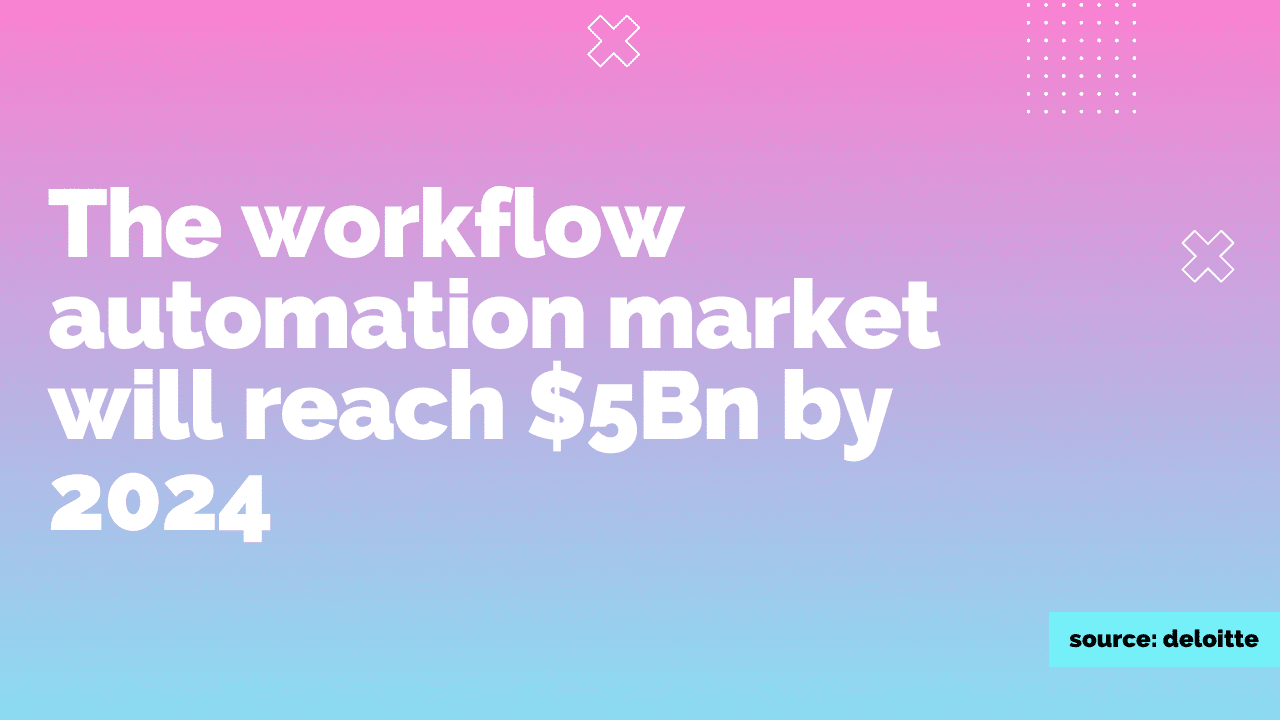
- The workflow automation market grows at 20% per year and is estimated to reach USD 5 billion by 2024.
- 31% of workflow automation users mentioned using RPA most heavily, and 18% used AI least heavily.
- Although workflow animation might threaten job positions, 26% of respondents in the survey admitted that their organizations were ready to address the impact of workflow automation technologies.
- 90% of executives say their automation efforts will lead to a larger workforce.
- Due to the rapid implementation of automation during the COVID-19 pandemic, 35% of survey respondents believe a shortage of workers skilled in automation and robotics will become a concern.
- Unlike other countries, 83% of executives in the US and 70% of Indian executives admitted that the adoption of automation was higher during the pandemic.
- Statistics show that over 50% of organizations do not know how long it will take to see results from their automation efforts. In addition, almost half of those organizations in the pilot phase have not estimated the payback period, and another 36% implementing and scaling automation have not calculated payback.
Human Resources
Automation in human resources ensures data-driven decision-making during recruitment. Your organization can experience better security practices in your HR department.
Check out these stats on how automation affects human resources.
- 14% of executive recruiters fear that automation technology will replace their job positions.
- 67% of the recruiters say that automation will save substantial time in recruitment.
- 20% of companies use automation to support diversity recruitment and eliminate biased recruitment
- Boston Consulting Group interviewed three thousand business executives. The survey found that 75% want to use AI and automation to explore more business opportunities.
- A survey by Deloitte found that 47% of companies use HR software older than seven years.
Human errors
If set up correctly, human errors can be eliminated with automation. Whenever a task is repetitive, the person doing the work can get complacent and errors are prone to occur. In a study by Smartsheet, 66% of the employees in the survey said that automation is the key in reducing human errors. Let's look at more statistics.
- Manual data entry has an error rate of 4% without verification layer steps, meaning per 10,000 entries, 400 are incorrect.
- 88% of data breaches in cyber-attacks are caused by human error.
- 58% of service downtime and 75% of data loss result from human error.
- UNLV conducted a study that found that humans using automation are twenty times more accurate with data verification than humans alone.
- Another study by IBM indicated that 88% of spreadsheets have at least one human error.
Customer Engagement
Providing your customers with good communication ensures that the lead conversion remains high. Automation provides you with various tools for customer engagement.
Here are some eye-opening statistics on how automation can impact your customer engagement.
- Automating chatbots in healthcare and banking will save about 70 cents per customer interaction.
- 67% of consumers expect to interact with businesses through messaging apps.
- In 2023, we expect nearly 40% of all customer interactions to be automated through Machine Learning and Artificial Intelligence.
- According to 68% of marketers, the most significant benefit of automation is increased customer engagement.
- About 65% of users prefer to ask questions using chatbots or other automated technology.
Coming years
Here are some predictions on how business automation will develop in the next few years.
